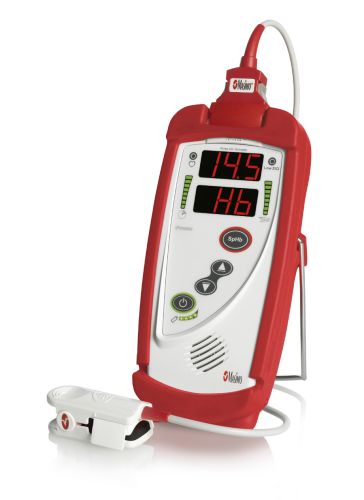Pronto Starter Kit 400 Adult (Pronto Device & 400 Sensors)
(Starter Kit + 400 Sensors)
Featuring Masimo SET® Measure-through Motion and Low Perfusion™ Pulse Oximetry with rainbow® Technology for Noninvasive Spot-Checking of Total Hemoglobin (SpHb®)
The Pronto Non-invasive Pulse Co-Oximeter offers noninvasive and quick spot-check testing of total hemoglobin (SpHb), SpO2, pulse rate and perfusion index. 2 year extended warranty included. The PRONTO features Masimo SET Pulse oximetry, which is proven accurate during motion and low perfusion in over 100 independent and objective studies.
Starter kit includes Rainbow 20-pin patient cable (1 ft), adult reusable sensor (3 ft) and 400 spot checks (spHb, SpO2 and SpMet).
NOTE: All Masimo items are non-returnable and nonrefundable after purchase unless deemed defective by the manufacturer. The CLIAwaived.com published return policy along with the usual terms and conditions do not apply to any Masimo items.
Pronto, with rainbow® technology, for noninvasive and quick spot checking of total hemoglobin (SpHb®), SpO2, pulse rate and perfusion index.
A Solution for Hemoglobin Spot-Check Testing
Traditional invasive lab testing provides delayed results and requires a painful needle stick and time consuming blood draws.
The Pronto offers noninvasive and quick spot-check testing of total hemoglobin (SpHb), SpO2, pulse rate and perfusion index, which may provide the following benefits:
Clinician
- Facilitates timely patient assessment
- Reduces the need to wait for lab results
Staff
- Easy-to-use -- reduces training time and improves efficiency
- Decreases risk of accidental needle sticks and exposure to blood-borne pathogens
- Requires no lab consumables or waste disposal
Patient
- Reduces painful needle sticks and time-consuming blood draws
- Enables immediate face-to-face counseling with clinician
Four Simple Steps
SpHb Analytical Performance
In 492 comparisons of SpHb and invasive hemoglobin (tHb) measurements from a laboratory CO-Oximeter, SpHb accuracy was as follows:
- 0.08 g/dL bias
- 0.96 g/dL at one standard deviation
- Below 12 g/dL, 99% of SpHb readings were <2 g/dL of the laboratory tHb value
- At or above 12 g/dL, 94% of SpHb readings were <2 g/dL of the laboratory tHb value
Please note: These results were obtained following a specific protocol, in which all Directions for Use were followed and SpHb measurements were compared to validated laboratory reference measurements. Differences in results may be caused by many factors, such as those explained in Masimo’s Directions for Use. Some independent researchers have conducted their own testing and obtained similar results, while other researchers have reported larger differences when comparing SpHb measurements to laboratory measurements.

